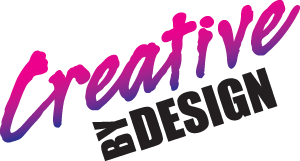Creating effective business cards is essential for leaving a lasting impression and fostering professional connections. Here are some tips to make your business cards more effective:
- Keep it Simple and Clean: Avoid clutter and excessive information. Stick to the essentials: your name, title, company name, contact information (phone number, email, and website), and your logo if applicable. Use a clean and professional design with legible fonts and a simple color scheme. Make sure text is easily readable.
- Choose High-Quality Materials: Invest in high-quality cardstock. Thicker cards tend to feel more substantial and convey professionalism. Consider finishes like matte, glossy, or even textured to enhance the look and feel of your cards.
- Include a Clear Brand Identity: Use your company’s branding elements like colors, fonts, and logo to maintain consistency and reinforce your brand identity.
- Highlight Your Unique Selling Proposition (USP): If your business has a unique value proposition, consider including it on your card to differentiate yourself from competitors.
- Add a Call to Action (CTA): Encourage recipients to take action, such as visiting your website, connecting on social media, or scheduling a consultation.
- Utilize the Back: Use the back of the card for additional information or a brief tagline that summarizes what your business does. You can also add a QR code linking to your website or portfolio.
- Consider Your Target Audience: Tailor your card to the preferences and expectations of your target audience. For example, a creative industry might appreciate a more artistic design, while a law firm may prefer a traditional look.
- Ensure Contact Information is Up-to-Date: Regularly review and update your business card’s contact information to avoid giving out outdated details.
- Use Professional Photography: If you include a photo of yourself, ensure it is professionally taken and portrays you in a polished, approachable manner.
- Keep it Standard Size: Stick to standard business card dimensions (usually 3.5 x 2 inches) to ensure your card fits easily into wallets and cardholders.
- Print in Quantity: Don’t skimp on the number of cards you print. Always have a sufficient supply on hand for networking events, meetings, and unexpected opportunities.
- Testimonials or Reviews: If applicable, consider featuring a brief client testimonial or review on your card to build trust.
- Be Memorable: Incorporate a unique element that makes your card stand out, such as a clever tagline, an original design feature, or an intriguing visual element.
- Proofread Carefully: Eliminate typos and errors. Double-check all information for accuracy before printing.
- Networking Etiquette: When giving out your card, do so graciously and ask for the recipient’s card in return. This shows professionalism and indicates your interest in maintaining contact.
- Follow Up: After receiving someone else’s card, take the time to follow up with a personalized message or email to strengthen the connection.
Remember that your business card is a representation of your brand and professionalism. By following these tips and designing a card that effectively communicates your identity and value, you can leave a positive and lasting impression on potential clients and partners.

